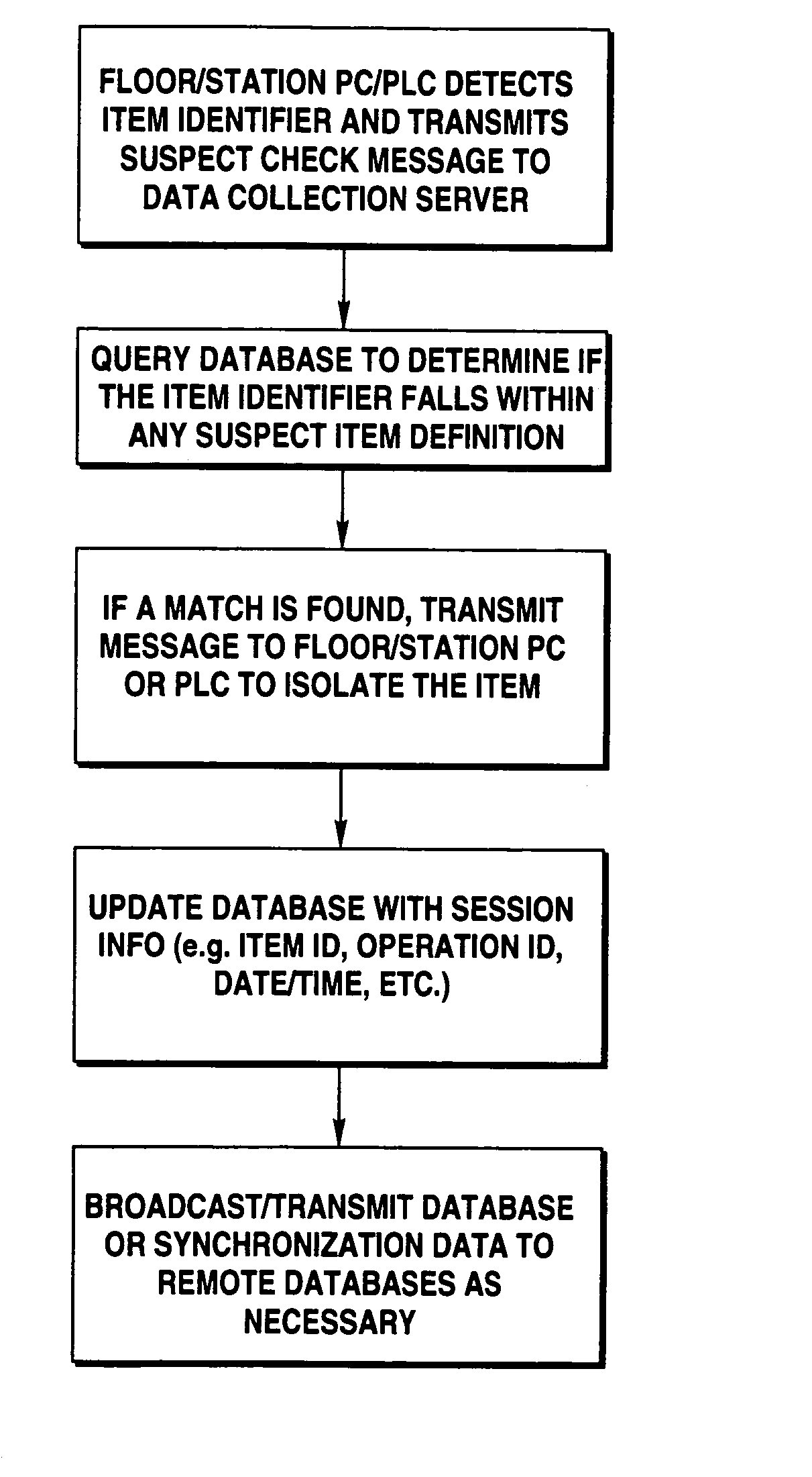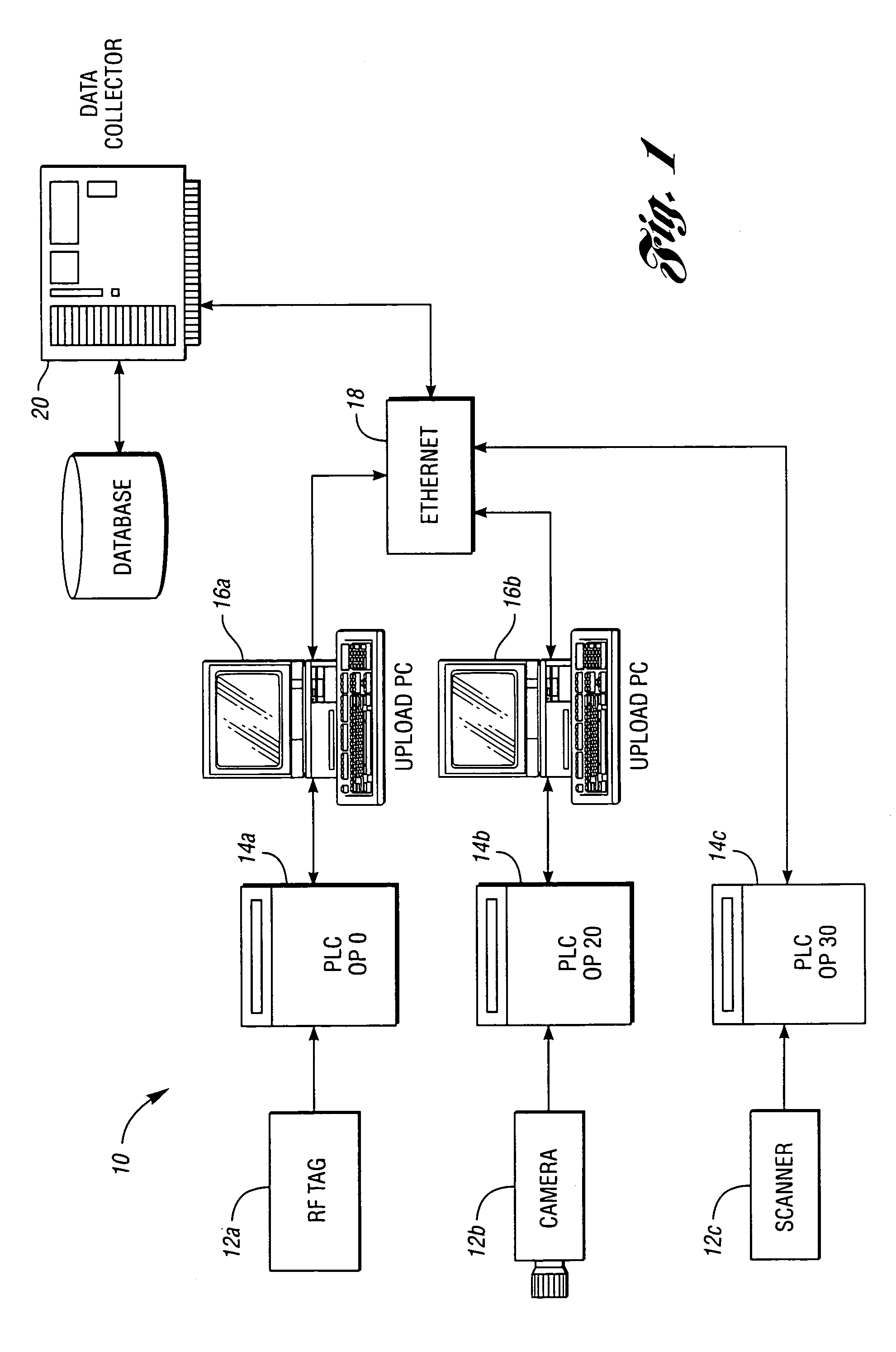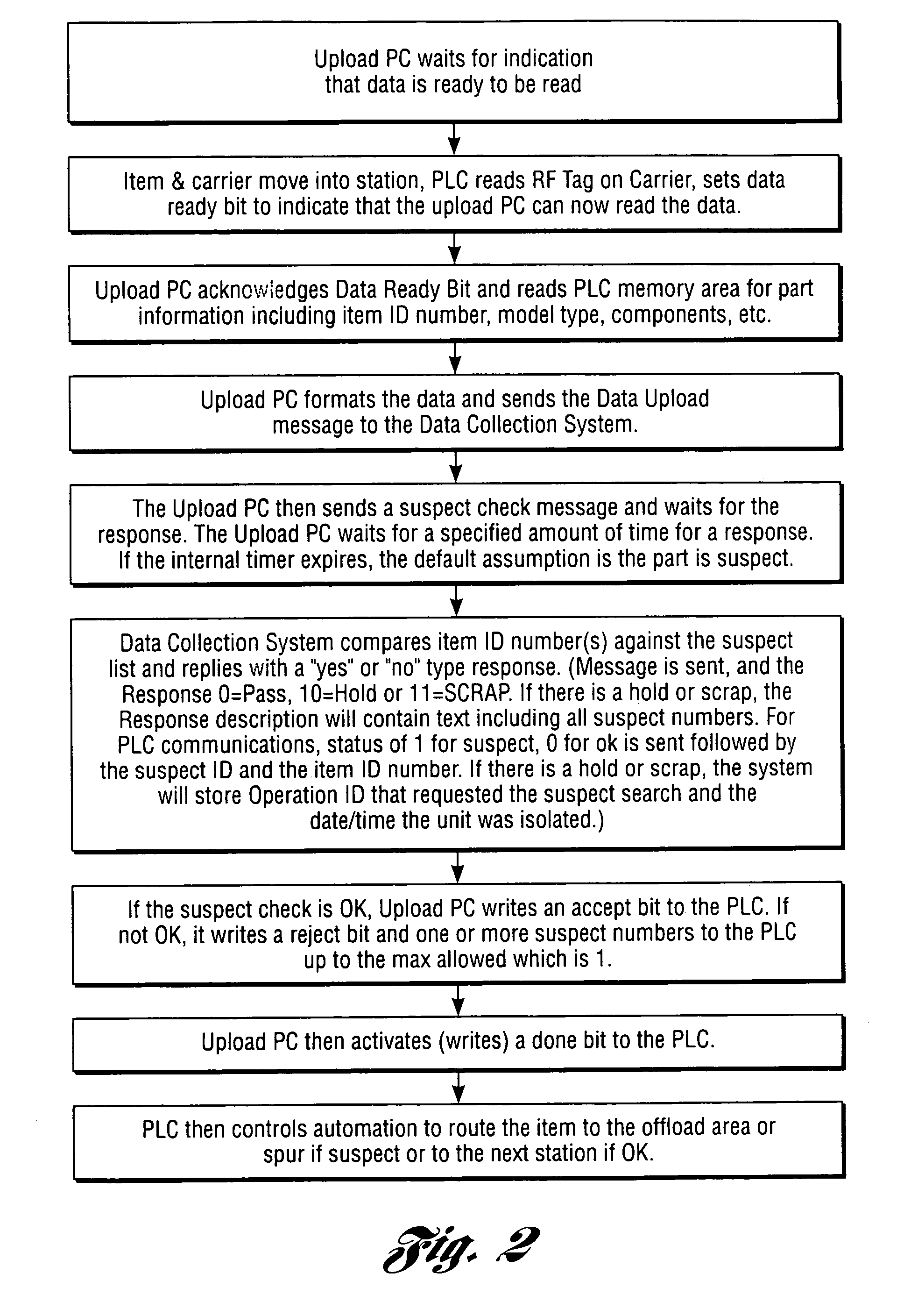Method and system for automatically isolating suspect items in a manufacturing or assembly environment
a manufacturing or assembly environment and automatic isolating technology, applied in the field of automatic isolating suspect items in the manufacturing or assembly environment, can solve the problems of unfavorable production or assembly operations, and inability to meet the requirements of production or assembly, so as to avoid or bypass suspect manufacturing or assembly operations
- Summary
- Abstract
- Description
- Claims
- Application Information
AI Technical Summary
Benefits of technology
Problems solved by technology
Method used
Image
Examples
Embodiment Construction
)
[0023]Aspects of the present invention may be implemented in association with a manufacturing or assembly line where raw parts, components, sub-assemblies or materials, etc. (“items”) are introduced or otherwise input into the line, some or all of the items having unique identifiers (e.g. serial numbers, lot numbers, manufacturing dates, etc.) During the manufacturing or assembly process, these item identifiers may be detected and recorded by a computer system referred to herein as a data collection system.
[0024]At designated data collection points in the manufacturing / assembly process (referred to herein as upload points), messages may be transmitted to a data collection system. The messages may include a variety of information including the item identifiers, the station name, an operation ID, the date / time, etc. Upload points may be PCs or PLCs.
[0025]Item identifiers may be captured or otherwise detected in a variety of manners, including an RF tag and reader, barcode label and r...
PUM
 Login to View More
Login to View More Abstract
Description
Claims
Application Information
 Login to View More
Login to View More - R&D
- Intellectual Property
- Life Sciences
- Materials
- Tech Scout
- Unparalleled Data Quality
- Higher Quality Content
- 60% Fewer Hallucinations
Browse by: Latest US Patents, China's latest patents, Technical Efficacy Thesaurus, Application Domain, Technology Topic, Popular Technical Reports.
© 2025 PatSnap. All rights reserved.Legal|Privacy policy|Modern Slavery Act Transparency Statement|Sitemap|About US| Contact US: help@patsnap.com



